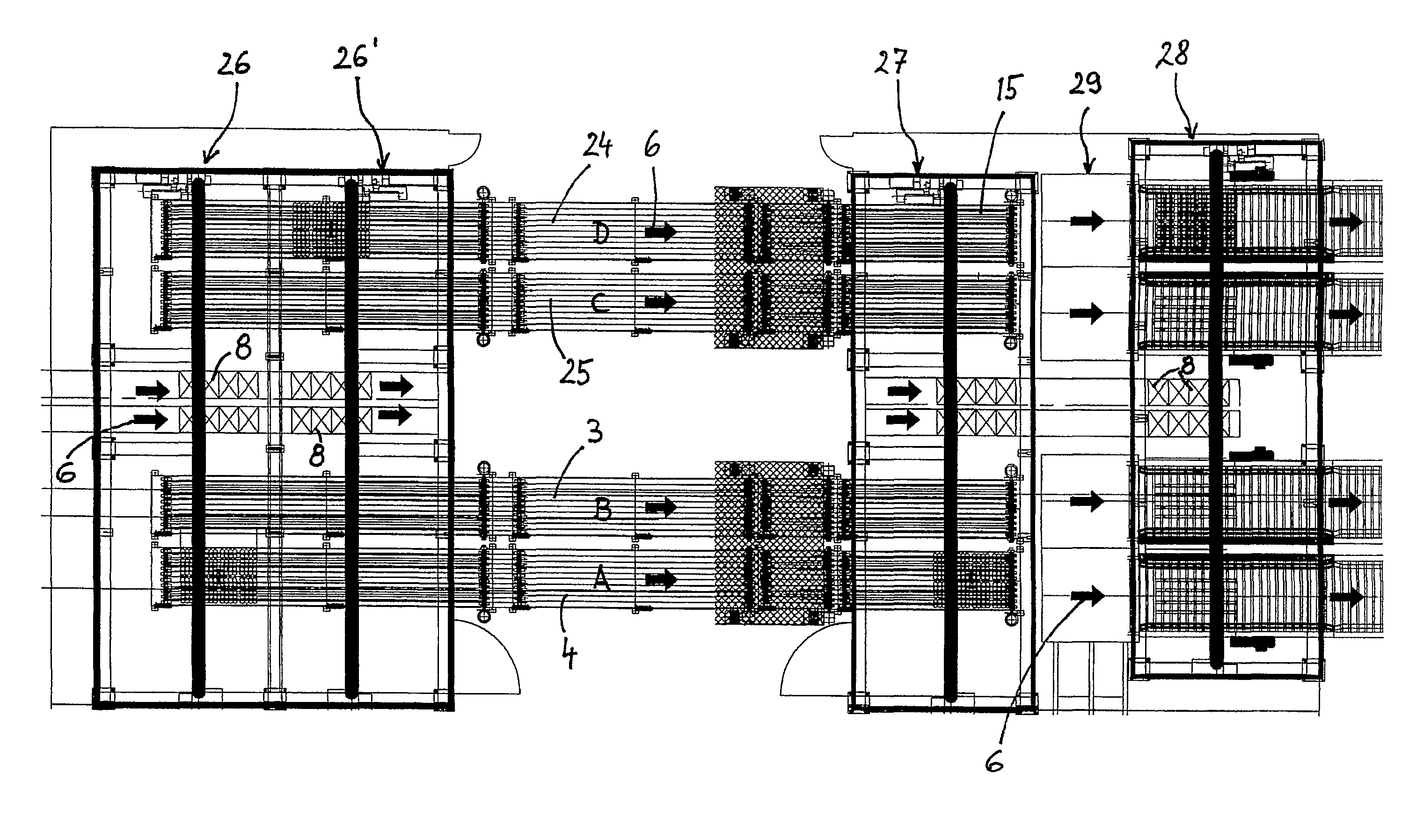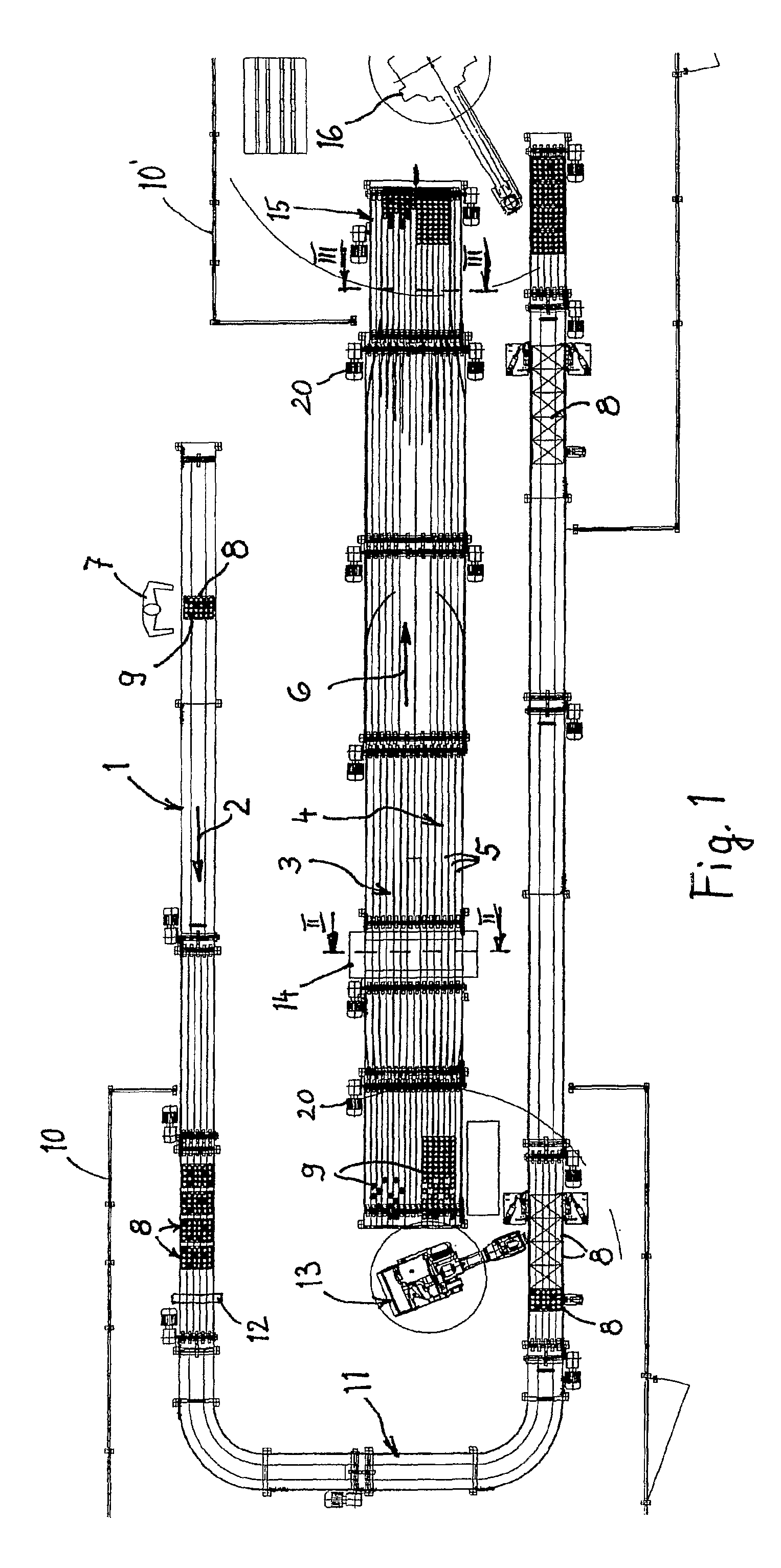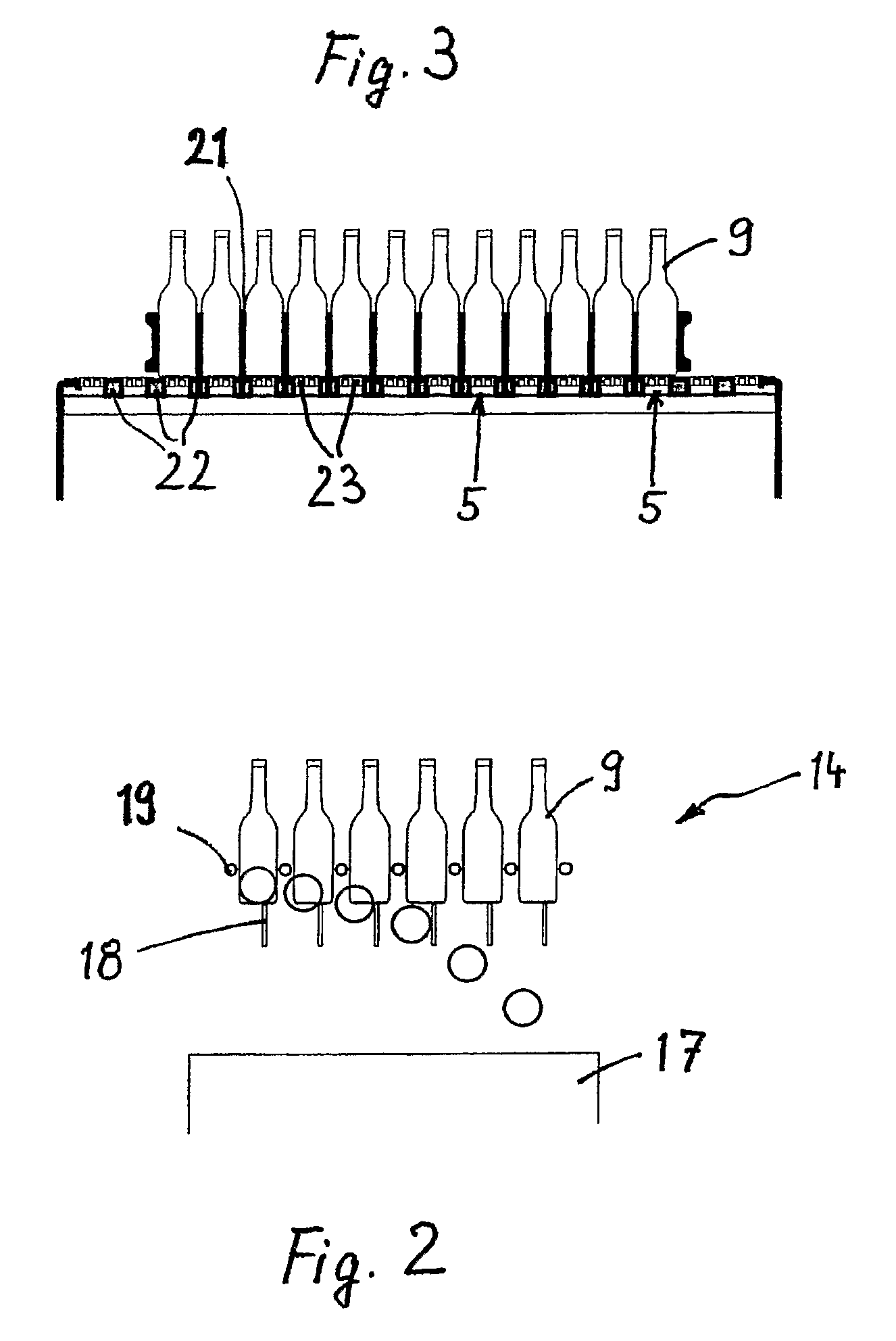Method of sorting containers
a container and container technology, applied in the field of container sorting, can solve the problems of low container throughput, delay in sorting, robots cannot work for example, etc., and achieve the effect of not excessively spending money
- Summary
- Abstract
- Description
- Claims
- Application Information
AI Technical Summary
Benefits of technology
Problems solved by technology
Method used
Image
Examples
Embodiment Construction
[0034]In FIG. 1 the view from above of a simple sorting installation is shown, in which a feed conveyor 1 is represented in the shape of a horizontal U with the direction of movement 2. In the middle of the U are two conveyors 3 and 4 arranged parallel to each other, which lie tight against one another and have several transport lines 5 each. In the embodiment shown on the figure, the conveyors 3 and 4 have six transport lines 5 each. The direction of movement of these conveyors 3 and 4 is numbered 6. A person 7 places a bundle 8 on the inlet side on the feed conveyor 1, in which black and white containers 9 are arranged occupying a a×b type matrix. In the present case a bundle 8 may be imagined as a drinks case and a container 9 as a bottle. The matrix is spanned by six rows with four gaps each. Thus there are 4×6 spaces in the matrix which is a 4×6 type matrix. If these are filled with containers 9, there are 24 containers 9 in a bundle 8.
[0035]The feed conveyor 1 moves the bundle...
PUM
 Login to View More
Login to View More Abstract
Description
Claims
Application Information
 Login to View More
Login to View More - R&D
- Intellectual Property
- Life Sciences
- Materials
- Tech Scout
- Unparalleled Data Quality
- Higher Quality Content
- 60% Fewer Hallucinations
Browse by: Latest US Patents, China's latest patents, Technical Efficacy Thesaurus, Application Domain, Technology Topic, Popular Technical Reports.
© 2025 PatSnap. All rights reserved.Legal|Privacy policy|Modern Slavery Act Transparency Statement|Sitemap|About US| Contact US: help@patsnap.com



